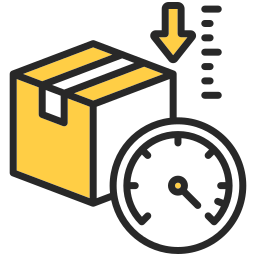Case Study 1
Precision Cutting and Assembly with Robotic Manufacturing Systems (Production)
Challenges
Traditional furniture manufacturing relies on manual cutting and assembly processes, leading to inconsistencies, potential for errors, and dependence on skilled labor. Furniture companies struggle to achieve high production volume, maintain precise product dimensions, and reduce waste during the cutting process.

Solution
Furniture companies can implement robotic manufacturing systems. These systems utilize robotic arms with integrated vision technology for precise cutting of wood or other materials based on computer-aided design (CAD) data. Automated assembly lines can then utilize robots for tasks like gluing, screwing, and joining components with high accuracy and repeatability.

Benefits

Increased production efficiency and higher output volume through automation of cutting and assembly tasks.

Improved product quality and consistency with precise cutting and automated assembly processes.

Reduced waste material from cutting processes due to robotic precision and optimized nesting algorithms.

Potential for lights-out manufacturing scenarios with minimal human intervention for specific production runs.
Case Study 2
Real-Time Production Monitoring and Data Analytics for Optimized Resource Management (Operations)
Challenge
Traditional furniture manufacturing relies on manual production tracking and limited data insights. Furniture companies struggle to optimize resource utilization, identify bottlenecks in production workflows, and make data-driven decisions.

Solution
Furniture companies can implement a network of sensors and data collection systems across their production facilities. Machine sensors can monitor performance and identify potential maintenance needs. Production line sensors can track material flow and identify bottlenecks. This real-time data is aggregated and analyzed by a central platform to provide insights into overall equipment effectiveness (OEE) and production efficiency.

Benefits

Improved resource management through data-driven insights into production processes and equipment utilization.

Reduced downtime and maintenance costs through proactive identification of potential equipment issues.

Optimized production workflows by identifying bottlenecks and streamlining material flow.

Data-driven decision making for resource allocation, production planning, and scheduling adjustments.
Case Study 3
Smart Warehousing with Automated Storage and Retrieval Systems (Logistics)
Challenge
Traditional furniture warehouses rely on manual forklift operations and static storage configurations, leading to inefficiencies in space utilization and time spent on material handling. Furniture companies struggle to optimize warehouse layouts, improve picking and packing processes, and ensure efficient order fulfillment.

Impact
Furniture companies can implement automated storage and retrieval systems (AS/RS) in their warehouses. These systems utilize robotic cranes or shuttles to store and retrieve furniture components or finished products on high-density shelving units. Warehouse management systems (WMS) can then be used to optimize storage locations and automate order picking processes.

Benefits

Increased storage capacity and space utilization within warehouses through high-density shelving configurations.

Improved picking and packing efficiency with automated retrieval systems minimizing manual labour.

Reduced order fulfilment times and faster delivery to customers.

Enhanced inventory control and visibility through real-time tracking of furniture components and finished goods.
These cases showcase how furniture manufacturing companies can leverage automation technology to address challenges across production, operations, and logistics. By implementing these solutions, furniture companies can achieve higher production volumes, improve product quality and consistency, optimize resource utilization, and streamline warehouse operations for faster and more efficient order fulfilment.
